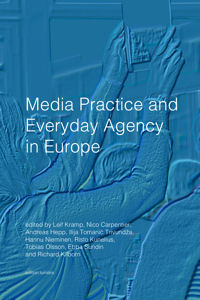
| |||
Media Practice and Everyday Agency in Europe | |||
| Title chapter: | Engaging with Media in a Fragmented Media Environment | ||
| Author: | Riitta Perala | ||
| Keywords: | Engaging with Media, Media Experience, Magazines, Audience | ||
| Abstract: | The media field is progressively fragmenting and boundaries between genres are blurring. Personal media landscapes can contain over a hundred media titles, and there is an increasing need to understand the nature and scope of people's media use. In this chapter I will be examining how people engage with media in the cross-media environment, especially with magazines. In the larger research project the media use of seven age-groups was studied, but here I focus on two groups: 45-55 year-old readers of the women's magazine Kotiliesi and 16-19 year-old teenagers. Magazine publishers often define media engagement in terms of readership frequency, minutes devoted to an issue or the percentage of an issue that was actually read (Napoli, 2010). In my research I treat 'engagement' as the readers' experiences with media titles â€" such as relaxing or getting practical tips (Peck and Malthouse 2011). I also include the spatial and actual media practices as a part of the media experiences. In order to examine the various forms of media engagement I used four qualitative methods: 1) online media diaries to record daily media routines; 2) Q-sorting interviews to map personal media landscapes and the interrelations between media titles; 3) observation to reveal users interacted with media at home; and 4) thinking aloud interviews in order to examine the thoughts that media content can provoke. I will present my preliminary findings, which illuminate the ways in which the participants engage with different media, genres and titles. Being under pressure is not problematic as such. Pressure can stimulate creativity, structural improvements and gains in efficiency. Pressure can be the institutional equivalent of the “positive stress” that drives us to give the best of ourselves, to think outside the box, to venture outside our comfort zone, to challenge and rejuvenate some of our certitudes. | ||
| >Click here to download full chapter [pdf] | |||
|
The | |||